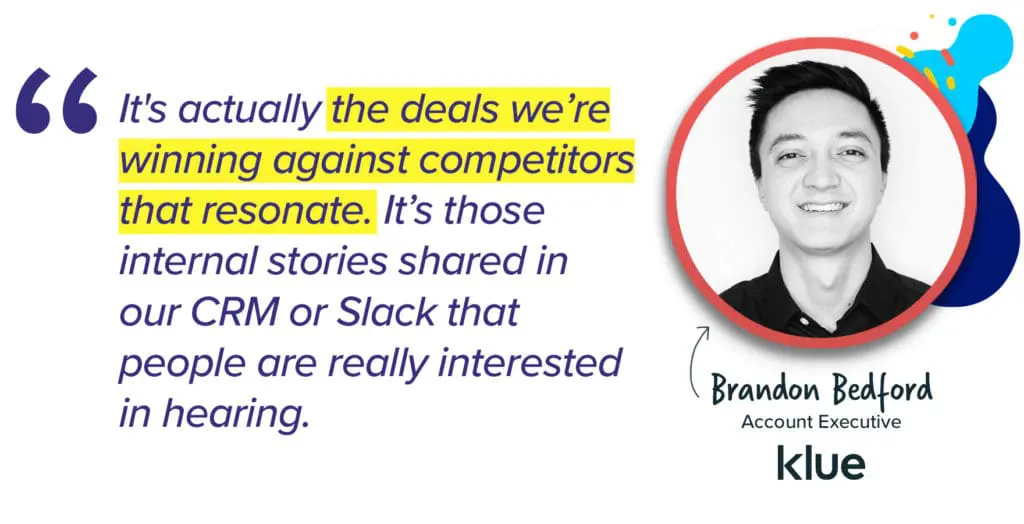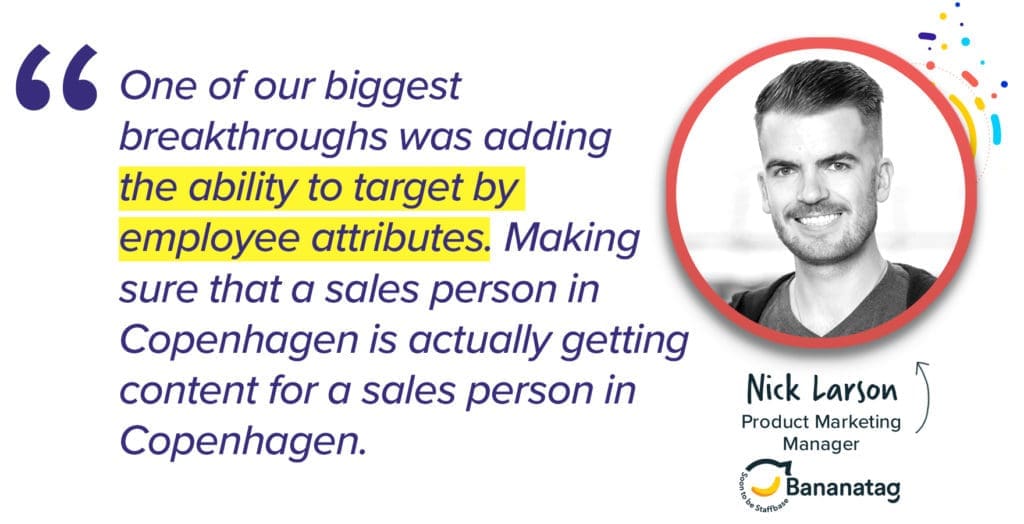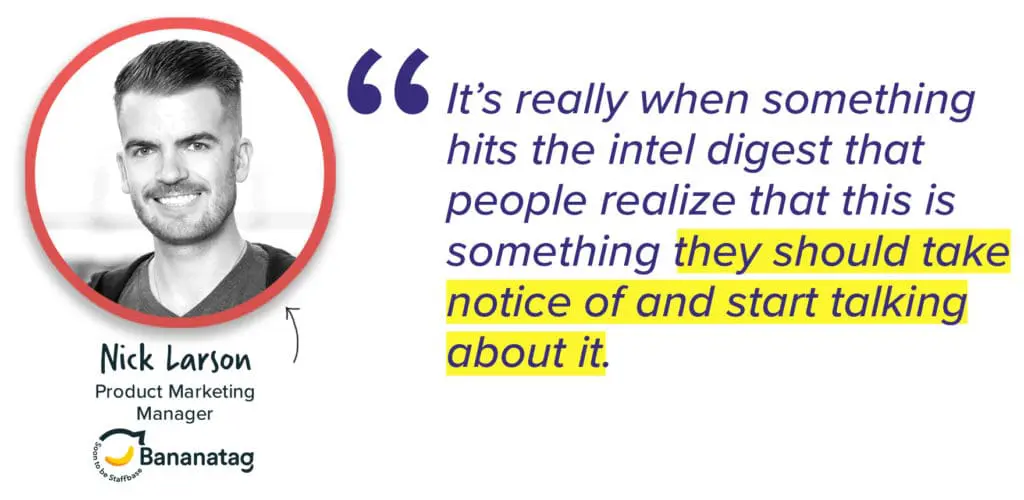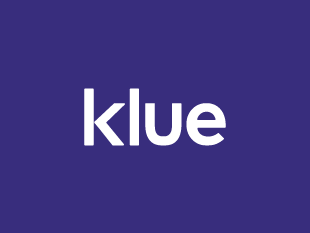Klue Compete
The Competitive Enablement Platform
Learn More
INTRODUCING KLUE INSIGHTS
FIND OUT MORE >

News never stops. Your competitors, politics, Kardashians. There’s always a fast-moving river of information that everyone wants to drink from.
People want news. And if you’re in the B2B world, what people really want is news on the competition. So how do you share that information out on a regular basis, and package it in a consumable, insightful way?
Enter the competitive intelligence newsletter.
Adam McQueen, host of The Competitive Enablement Show podcast, recently sat down with two competitive intelligence experts to discover how they got started and what makes their newsletters a hit among their peers.
The newsletter will be one of your most critical resources for launching competitive intelligence successfully.
(Psst, want to see how experts are actually building their competitive intel newsletter? Grab our guide and templates below 👇)


If you’ve already started building battlecards, newsletters, kill sheets without first establishing a single source of truth, we’re going to need you to hold your horses.
That’s because your competitive intelligence newsletter and battlecards are vehicles for information found in your source of truth. This is not a chicken or egg kind of situation. The egg comes first — and the source of truth is your egg.
This kind of approach has been crucial to the success of Nick Larson’s competitive newsletter at Bananatag.
“You have to have a source of truth and then the Intel Digest is just building on top of it.”
(In a hurry? Watch this ONE tip you need to use when writing your next competitive intelligence newsletter below 👇 )
The best way to build your competitive newsletter is by starting small.
For companies with a lot of competitors in a jam-packed competitive landscape, it will better serve your competitive newsletter to dial in on two or three direct competitors to test your approach and what resonates with your audience.
Brandon Bedford, who runs Klue’s competitive intelligence newsletter, says that by starting small you avoid including an overwhelming amount of information and increase your chances of sharing meaningful insight.
“If you have too long of a newsletter, it’s not going to get read. You need to make sure it’s really high impact. If you’re at a larger enterprise and you have many business units, pick one to focus on and start scaling from there.”
And now that you’ve picked a focus for the content, it’s time to get to know the people who will read it.


A good competitive newsletter is all about communicating. And good communication is all about knowing your audience and then tailoring your content to it.
In broad strokes, your audience might be your sales team, the C-suite, or product marketers. But there are a whole lot of finer points of distinction to be made within those broad strokes.
Both experts having had hands-on experience as sales reps before taking ownership of their companies’ competitive newsletters, Nick and Brandon knew the kind of information they needed to win more deals.
“You have to know your audience and what type of content is going to engage them. I had the benefit of already having worked at Bananatag for a couple of years before we started the newsletter. And I worked in sales for that time,” says Nick.
But beyond understanding in which business unit your audience sits, it’s important to consider other information that can lead to increased relevance.
Nick says that, while his knowledge of the needs of sales reps and the company at large were key elements in getting his competitive newsletter off the ground, it was an ability to target his audience by personal attributes that helped him get the right content to the right audience.
“For Bananatag, one of our biggest breakthroughs as a product was when we added the ability to target your email newsletters by employee attributes. So making sure that a salesperson in Copenhagen is getting content for a sales person in Copenhagen, and they’re not getting just the same content that’s sent to everyone.”
Bananatag, who recently merged with German-headquartered company Staffbase, the imperative to geo-target is obvious. But even companies operating within a one-country or one-continent context need to drill down to understand attributes of their potential audience.


Knowing the kind of content your audience wants is fundamental to building a good competitive newsletter. But perhaps just as important is knowing ‘how’ your audience wants to consume this content.
Just like feeding your Danish sales reps with information relevant to their location makes a huge difference, so too does understanding your audience’s preferred ways of communicating.
Competitive newsletters are designed for an internal audience. And newsletters that actually get read are often those that feel more like an instant message between colleagues than a government press release.
Brandon takes advantage of this reality and makes sure that in addition to his insightful content, he adds a bit of fun as well.
“We have a running joke at Klue that we all love the television series Friends. And so I make every subject line of our digest ‘The One With X Competitor’s Rebrand’, just like the names of the episodes from the TV show.”
Inside jokes and emoji-filled content may not be the best approach for every organization, but when done right, it can bring your team together and make them more inclined to give your newsletter a read.
“One of my favourite elements to add are Glassdoor complaints about working at our competitors. Does that make reps more powerful in deals? No, but it does give them a laugh. It does give them a reason to read.”
Places to look for must-read content:


One thing you can be sure of when it comes to your audience is that they look to your newsletter to provide actual insights. Publicly available information regarding a merger, acquisition, or change at the leadership level is not inherently valuable to a sales rep’s or marketer’s success.
Brandon says he asks himself important strategic questions before including this type of competitive intelligence into his newsletter, ultimately leading to more valuable insight for his audience:
Reflecting on the how and why forces the newsletter curator to really decide whether this piece of intel is worth including. If Brandon can’t answer his own questions, it flags that he needs to reevaluate his content.


Gathering competitive intelligence from external sources is frankly not that impressive. Certainly not without first filtering out the noise or without the right context.
Your audience is in fact more likely to derive practical insights from competitive intel that has been shared internally. That’s because internal information:
For Brandon, it’s this kind of content that resonates most with his audience time and time again.
“I always thought there would be a ton of intel research and things happening on the web that will be really valuable. But it’s actually the deals we’re winning (or losing) against competitors [that resonate]. Those kinds of customer stories aren’t being scraped from the web. It’s those internal stories shared in our CRM or Slack that people are really interested in hearing.”
As you begin to position your newsletter as valuable content your audience comes to expect, it can become a catalyst for conversation in the way an internal MS Teams or Slack message cannot.
At Bananatag, Nick has found that his competitive newsletter can actually encourage virtual watercooler discussions.
“I’ll still post things on Slack in between newsletters, but those Slack posts don’t really kick off conversations. It’s really when something hits the Intel Digest that people realize that this is something they should take notice of and start talking about it.”
What’s more, when a competitive newsletter is shared directly into an internal Slack channel, conversations begin to flow based on that newsletter’s content. In Nick’s experience, this kind of ease of access and visibility can even increase adoption of your competitive platform among sales reps.
No matter what industry you’re in, or teams you’re looking to support, the experts agree on the fundamental aspects of creating an effective competitive newsletter:
Looking for more tips and templates to build a competitive intelligence newsletter? Grab our latest guide and templates that include examples you can pull from some of the best in compete.




Competitive Enablement
The topic of Large Language Models (LLMs) has a lot of confusion. Here's what you need to know about how Klue is working with them.


Competitive Enablement
Product Marketing
If your competitive intel game is too strong for automation, too pure for data privacy, and too rebellious for accuracy — then Klue AI is probably not for you.


Let’s do it. Tell us a bit about yourself and we’ll set up a time to wow you.
Let's do it. Tell us a bit about yourself and we'll set up a time to wow you.
XLet's do it. Tell us a bit about yourself and we'll set up a time to wow you.
XSubscribe to get our latest AI functionality and news in your inbox.
XOur Buyer Pulse feature, set to launch in Q2 2024, offers valuable insights into the factors influencing buyer decisions in your pipeline. By signing up for the waitlist, we can better gauge interest and proactively engage with you to streamline the setup and integration process before the feature becomes widely available.
X